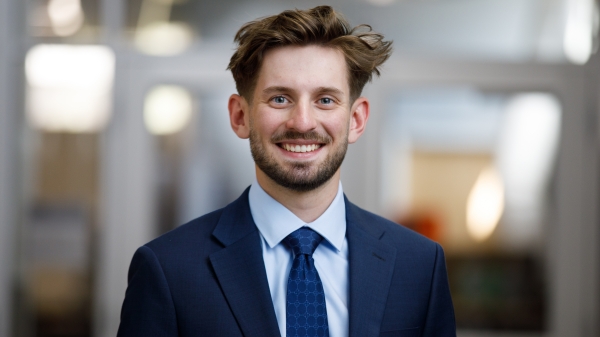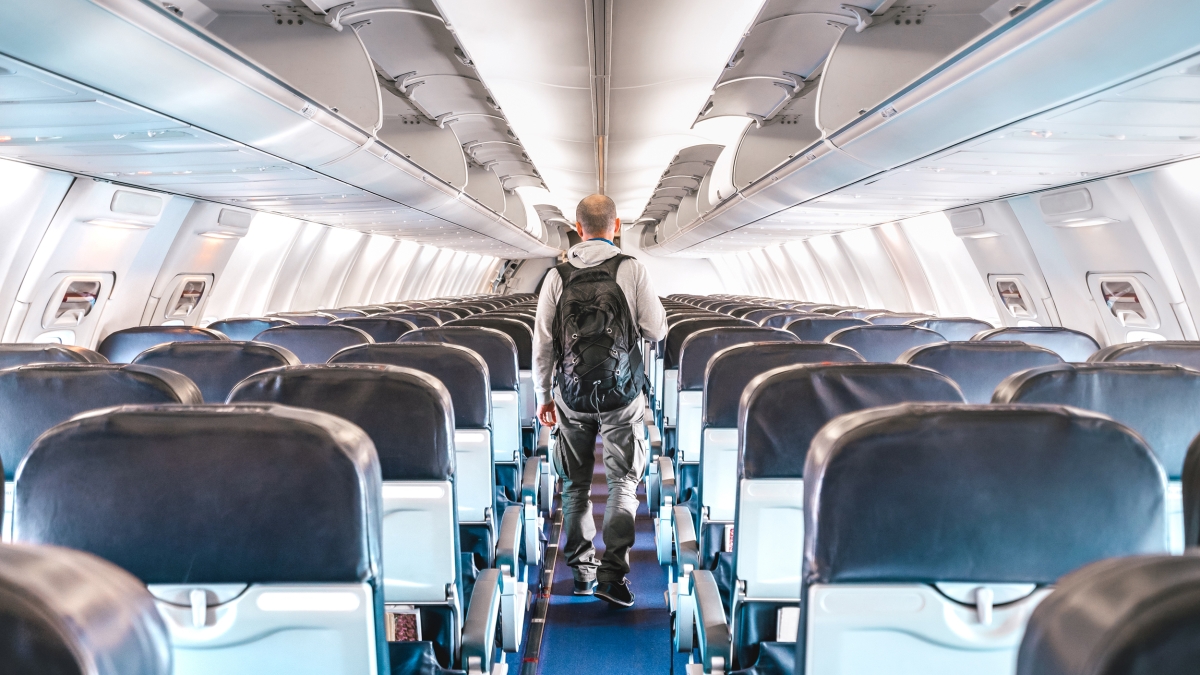After the terror attacks of 9/11, air travel took a major hit. People were terrified to fly. Tickets were heavily discounted. Planes flew half-empty.
Passenger traffic on U.S. airlines this year is down 95% compared to last year.
In the wake of the pandemic, what will flying look like? Experts agree that’s completely up in the air. Even the airlines have no idea what to do.
ASU Now asked two aviation experts from Arizona State University to weigh in on what’s going on behind the scenes, where ticket prices may head, whether boarding will take even longer and if that dreaded middle seat will finally be empty.
Liability is a huge issue, said Tim Takahashi, a professor of practice for aerospace engineering in the School for Engineering of Matter, Transport and Energy at ASU. Prior to joining the university, he worked at NASA/Ames, Lockheed-Martin, Raytheon and Northrop-Grumman.
Airlines operate as common carriers. (So do trains and bus lines.) Laws regarding commercial passenger carriers go back to the law of the sea in late 13th-century Western Europe. “Common carrier law is ancient maritime law,” said Takahashi, who is a scholar of technology law.
If a passenger on a ship decides they want to leave at sea, they can’t. The same goes for a speeding train. Essentially, passengers are trapped. So, carriers are responsible for offering passengers a higher duty of care. For instance, the legal expectation of the amount of care provided by a common carrier is much higher than if a friend gives you a lift in his car. (This is how Uber gets away without being licensed and bonded in the same way a taxi company has to be.) Back in the age of sail, passenger ships had doctors on board.
“The expectation of care in aviation is very high,” Takahashi said. Flight attendants have some medical training, there are extensive first aid kits on board, along with defibrillators, etc.
“It’s well beyond what you would normally expect,” he said. “Airlines for sure are very worried about, 'What does this mean in the case of a pandemic?'”
Some airlines have announced they’ll be giving masks to passengers and completely doing away with food and beverage service. Expect to see both the staff and passengers in masks when you fly while the pandemic continues. Most of the major carriers are running ads right now touting new equipment cleaning procedures, proliferation of mask use and their offerings of sanitizing wipes for passengers.
What you aren’t hearing about is social distancing on board the aircraft, and there’s a very good reason that’s a taboo subject.
In the short term, experts expect some level of spacing on planes. (Although recent news has shown people being crammed on planes the same way they were in February.)
“A lot of this will be related to supply and demand,” Takahashi said. But the real story lies in the belly of the plane, he said.
Legacy airlines, like United, American and Delta, all carry mail for the federal government. Look at how much stuff we buy online these days. Online retailers all buy freight services from the major airlines, and those freight contracts will put a floor to the amount of travel. Takahashi predicts flights may bottom out at two a day with a few people on board and stay there during the worst of the pandemic. Right now he has looked at what kinds of jets are flying out of Sky Harbor. There are fewer flights, but larger planes — like transcontinental jets — are carrying more cargo.
But passenger cabins will remain strictly that. “You’re not going to see an Amazon box next to you in the middle seat on a flight,” Takahashi said.
He doesn’t predict a future where airlines throw caution to the wind and cram planes like they were before. Because of common carrier laws, if you catch the coronavirus on a flight, you would have a very good case for suing the airline.
“I think the airlines are not going to want to cram people in because of the risk,” he said. "And people aren’t going to want to do that ... I think cooler heads will prevail here and flights will be relatively empty.”
At the same time, airline business models revolve around having 80% of the seats full to break even. Inevitably, they’re going to take a huge loss.
But if those two flights a day start to become crowded, there’s going to be a lot of pressure from customers not to pack the flights. So, that’s great — we’ve all waited for this for years: a flight with some breathing room on it. But what if a flight to New York from L.A. now costs $2,000?
“That is the problem in the end,” Takahashi said.
In the 1970s, airline fares were regulated. They were high enough airlines could be profitable without having full flights. Since deregulation, many airlines have gone bankrupt.
Marc O’Brien is the program chair of the Polytechnic School Aviation Program, which teaches pilots, air traffic controllers, airport administrators and drone pilots.
“If you start to see fewer and fewer people traveling. … I don’t see a ($2,000 flight from coast to coast) because they’re going to try get as many people flying as they can,” O’Brien said.
Airlines decreased prices after 9/11 in an effort to get people to fly again. Another factor: fuel prices are low right now — another sign fares may not jump. “So much of the expense of operating an airline is fuel,” O’Brien said.
As to keeping the middle seat open?
“I wonder if some of the flights might be subsidized at some point to keep the airlines solvent,” he said.
Regulation of pricing may come back. Safety is highly regulated. Pricing is not.
“This is going to be very uneven worldwide,” Takahashi said. “Certainly the large trends have been to deregulate both in the U.S. and Europe. My feeling is pricing could swing either way: incredibly good values if the airline does not go out of business and they have to operate the airplane to fly the freight. Then the pricing will be very competitive. If that’s not the case, then the pricing could become very high in order at some level to keep the airline solvent.”
Frontier Airlines announced a deal last week where passengers could pay a fee to keep the middle seat unoccupied. After three members of Congress published a letter of protest over the policy, Frontier backed down. The CEO said last week if it left all middle seats unoccupied, ticket prices would rise by 50%.
And our preflight obstacle course may become more complicated than it already is. There is a cry — from the airlines, naturally — for the Transportation Security Administration to include a temperature check. No one has discussed what will happen to the gray plastic tubs handled by thousands of people every day.
An “immunity passport” is being discussed across the globe, however, that would work like a TSA Precheck pass. You’d present proof that you have been clear of coronavirus symptoms for 14 days. China’s Ministry of Health is already issuing such a certificate.
Right now you’re supposed to get to the airport an hour before domestic flights, two hours before international flights. If there’s a lengthy health check on top of existing security, “I think you’ll see fewer people flying,” O’Brien said.
“The only real solution is going to be when there’s a vaccine,” he added. “There’s so many unknowns right now.”
Takahasi agreed.
“Long term, who knows what’s going to happen?” he said. “Short term, definitely a lot of deals and certainly tremendous flexibility.”
Top photo: Inside view of commercial airplane with solo male traveler. Photo by iStock/Getty Images
More Science and technology

Cracking the code of online computer science clubs
Experts believe that involvement in college clubs and organizations increases student retention and helps learners build valuable social relationships. There are tons of such clubs on ASU's campuses…
Consortium for Science, Policy & Outcomes celebrates 25 years
For Arizona State University's Consortium for Science, Policy & Outcomes (CSPO), recognizing the past is just as important as designing the future. The consortium marked 25 years in Washington, D…

Hacking satellites to fix our oceans and shoot for the stars
By Preesha KumarFrom memory foam mattresses to the camera and GPS navigation on our phones, technology that was developed for space applications enhances our everyday lives on Earth. In fact, Chris…
